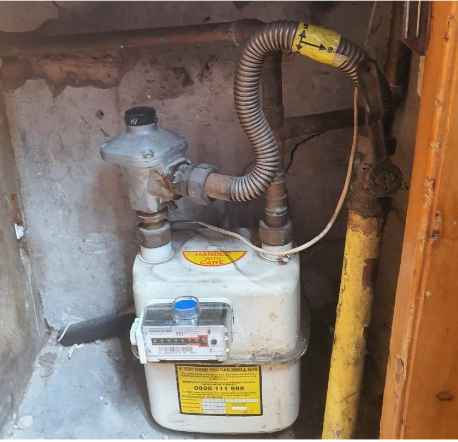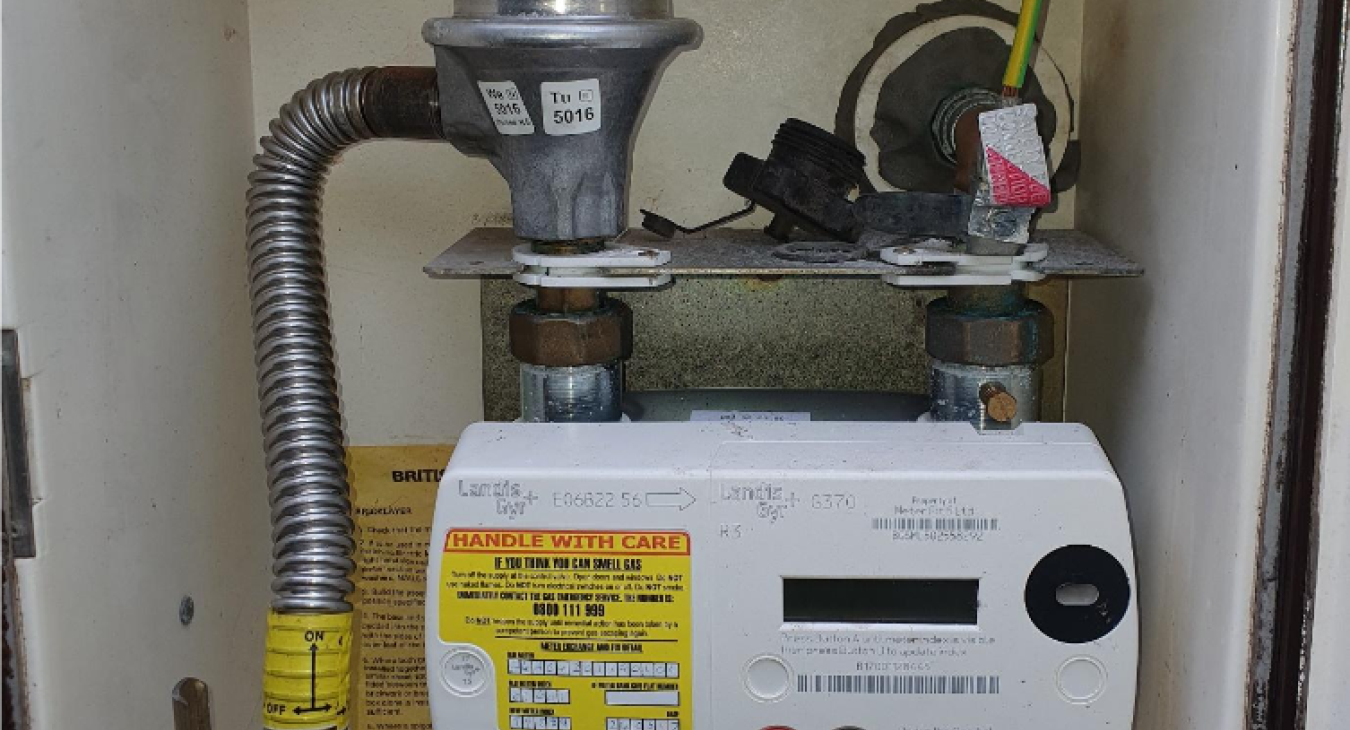Does my gas meter need electrical earth bonding? - Electrical Faults Fixed
If you have recently had a gas smart meter installed or any work done on the gas system by an engineer. You may have been told about something called bonding. Bonding is a safety electrical connection to pipework which ensure that the risk of electric shock and explosion is greatly reduced.
Where your home does not have gas meter or gas pipework bonding to the elecrical system, you may be left with a warning notice and informed about the potential dangers. The likelihood is you will receive a GAS METER BONDING WARNING notice.
This paperwork is left with a homeowner when there is no gas bonding in place and there is usually a card left by the gas meter warning of the issue too.
1) Why do I need earth bonding to the Gas Meter?
In electrical systems, stray electrical currents can flow through the earth wire. This can happen when there is an electrical fault in the system in your home, if there are electrical faults in other homes or out in the street.
These electrical currents can flow through the gas piping or water pipe and give rise to electrical shock risk. Having a safety earth electrical connection (bonding) to the gas meter and pipework will ensure that the risk electric shock is minimised.
There can also be issues when an engineer comes to work on the gas system. As there are stray currents flowing through the electrical earthing system at times, if the gas meter or its pipework are not bonded correctly then there can be a spark created when pipework is reconnected.
This spark is often enough to ignite any stray gases that may be present following work on the gas pipework system. This is why its important that any metal pipe is earthed. Gas engineers will use a bonding jumper cable when changing pipework or an electrical meter to prevent any sparking during swapping pipework over.
Back to top2) What is bonding exactly?
Main equipotential earth bonding is where the water or gas pipework is connected to the electrical system to ensure that these parts will reach the same voltage as other metal parts during an electrical fault.
If a fault occurs with the electrical wiring or parts of the electrical system such as metal light switches, appliance cases and plug sockets can become live at a high voltage. We need to ensure that any metal parts that go into the ground such as water and gas pipes also reach the same voltage.
CRAZY!
No.
By ensuring that the same voltage appears EVERYWHERE we ensure that there is no risk of electric shock by touching a part at high voltage and a part at NO voltage.

(A gas meter that needs bonding)
Back to top3) Does all metal work need bonding?
No. A ground wire or earth wire should be run to all plug sockets, electrical switches, and other metal objects of the wiring system. These earth wires are more for fault protection rather than limiting a dangerous voltage between two parts.
Bonding has to be run to all parts that are considered EXTRANEOUS CONDUCTIVE PARTS.
What is that?
Extraneous conductive parts are metal parts of the building that are NOT part of the electrical system BUT likely to introduce an earth path. This is where metal pipes go into the ground, structural steelwork goes into the ground and so forth.
Back to top4) How do we know if parts need bonding?
Simply because pipes are metal does NOT mean that they require bonding. In order to connect a bonding conductor, your electrician will carry out some testing on the parts that are thought to need bonding.
Some gas pipes and water pipes will NOT require bonding if their resistance to earth is quite high. This is because, they won’t introduce a potential difference causing an electric shock risk if they have a high resistance to earth.
Electricians will use their special test equipment to carry out checks on any parts believed to be introducing danger. If the parts require a bonding wire to be connected back to the fuseboard then they will give a very low resistance reading (less than 22k ohms).
Your electrician will then install the right size bonding conductor necessary to ensure safety and comply with local building code or wiring regulations.
Back to top5) Do Plastic Pipes need Bonding?
Where there are plastic incoming pipes into the property then it is not likely that these will need a safety electrical earth connection (bonding). They should still be tested though. Without ACTUALLY testing the pipework, it is not guaranteed that everything is safe.
A plastic incoming Gas pipe is no guarantee that bonding is not required, nor is a plastic incoming water pipe. Electrical bonding is something that should be tested for.
The Gas company may advise that electrical earth bonding needs to be carried out and even issues a GAS METER BONDING WARNING, but an electrician will VERIFY that this is the case. There is a crossover in knowledge between Gas and Electrical trades and as such, you may receive a notice from a Gas Engineer that bonding is required when, actually, it is not.
Back to top6) Summary
Gas pipe bonding is a technical job requiring knowledge and expertise in order to safely carry out works. Getting things wrong could mean that danger is increased and the likelihood of fires, shock and explosions is increased.
When bonding is installed to extraneous conductive parts of a property, electrical continuity must be checked on the gas pipe bonding or water pipe bonding. This is a process where checks are made to ensure that there is adequately low electrical resistance along the bonding connection. The resistance is checked from the pipe that is bonded to the earthing conductor for the property.
Back to top7) Common Questions
7.1) Where should bonding be installed?
The equipotential bonding should be installed at a convenient point as close as possible to the point of entry of the pipework (or other metal part) into the building. This is normally within 600mm where possible.
7.2) Does bonding protect against lighting strikes?
Direct lightning strikes are rare and when they do occur, they will find the lowest resistance path to earth in order to travel efficiently. Bonding does not protect against lighting strikes. In order to achieve lighting protection, it would be best to have an assessment of the building by a lightning protection specialist then a lightning protection system can be installed.
Back to top
Read more articles
- Log in to post comments


